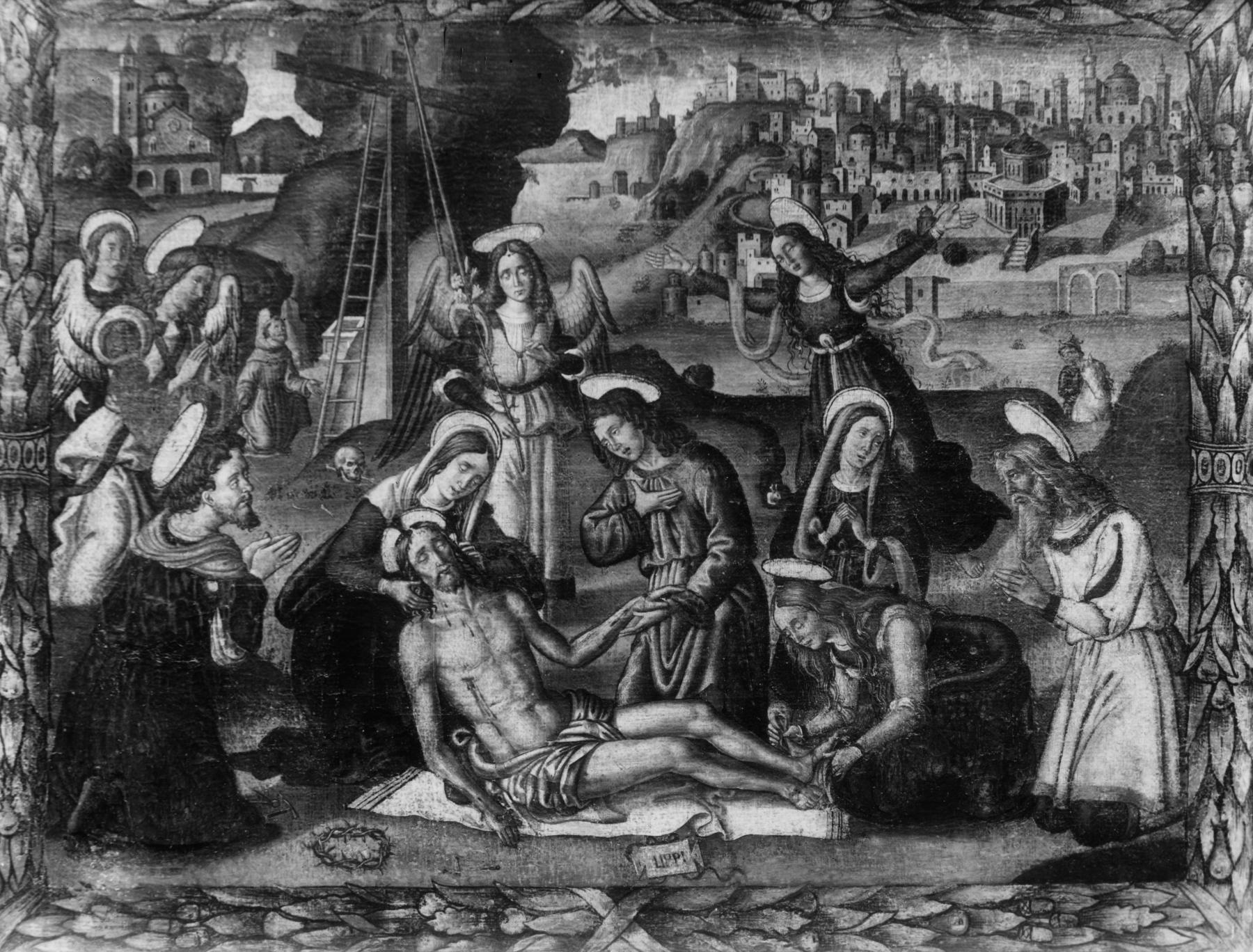The Deposition
(Renaissance Europe )
This painting depicts the moment immediately after the crucifixion when Christ’s body was removed from the cross and mourned by his followers. The Virgin Mary tenderly supports Christ’s head while the apostle John holds his hand and Mary Magdalen wipes the blood from his feet. Additional mourners—including Joseph of Aramithea, Nicodemus, two other women (probably Mary of James and Mary Cleophas), and three angels—look on in expressions of anguish or contemplation. The cross from which Christ’s body was removed is visible in the distance with the tiny figure of Saint Francis of Assisi kneeling in adoration. Francis was not part of the biblical narrative and was probably included at the request of the patron, perhaps a Franciscan monk who might have used the painting for private devotion in his cell.
While the subject was common in Renaissance painting, the careful and unimpeded view of Jerusalem in the background is rare. The model for this view appears to be the illustration of the city in the “Peregrinatio in terram Sanctam,” Pilgrimage to the Holy Land, a travel account published in 1486 by Bernhard von Breidenbach (ca. 1440-97), a city offficial of Mainz, Germany, of the pilgrimage he made to Jerusalem.
The early 20th-century attribution of this painting to the Florentine artist Filippino Lippi (ca. 1457-1504) was undoubtedly based on the inscription “LIPPI” on the scroll in the foreground; however, this inscription is a reworking of the letters “INRI”, the acronym for "Iesvs Nazarenvs Rex Iudaeorvm" (Jesus Christ, King of the Jews), which is recorded in the New Testament as having been written at the top of Christ's cross. The artist in fact remains unidentified, and it remains unclear where in Italy this picture was painted. The regions of Umbria and Emilia-Romagna have been suggested.
The frame visible in the image is actually painted on the canvas. This is not uncommon when the painting, usually in vertical format, is intended as a banner to be carried in procession. This "landscape" format is unusual but not impossible for that function.
Inscription
Provenance
Provenance (from the French provenir, 'to come from/forth') is the chronology of the ownership, custody, or location of a historical object. Learn more about provenance at the Walters.
Don Marcello Massarenti Collection, Rome [date and mode of acquisition unknown] [1897 catalogue: no. 57, as Filippino Lippi]; Henry Walters, Baltimore, 1902, by purchase; Walters Art Museum, 1931, by bequest.
Conservation
| Date | Description | Narrative |
|---|---|---|
| 12/1/1950 | Examination | examined for condition |
| 7/3/1968 | Treatment | other |
| 3/17/1981 | Treatment | examined for technical analysis; loss compensation; other |
| 1/28/1985 | Examination | other |
Geographies
Italy, Emilia (Place of Origin)
Measurements
Painted surface H: 19 11/16 x W: 25 7/16 in. (50 x 64.6 cm); Original fabric H: 20 1/2 x W: 25 11/16 in. (52 x 65.3 cm)
Credit Line
Acquired by Henry Walters with the Massarenti Collection, 1902
Location in Museum
Not on view
Accession Number
In libraries, galleries, museums, and archives, an accession number is a unique identifier assigned to each object in the collection.
In libraries, galleries, museums, and archives, an accession number is a unique identifier assigned to each object in the collection.
37.1054


